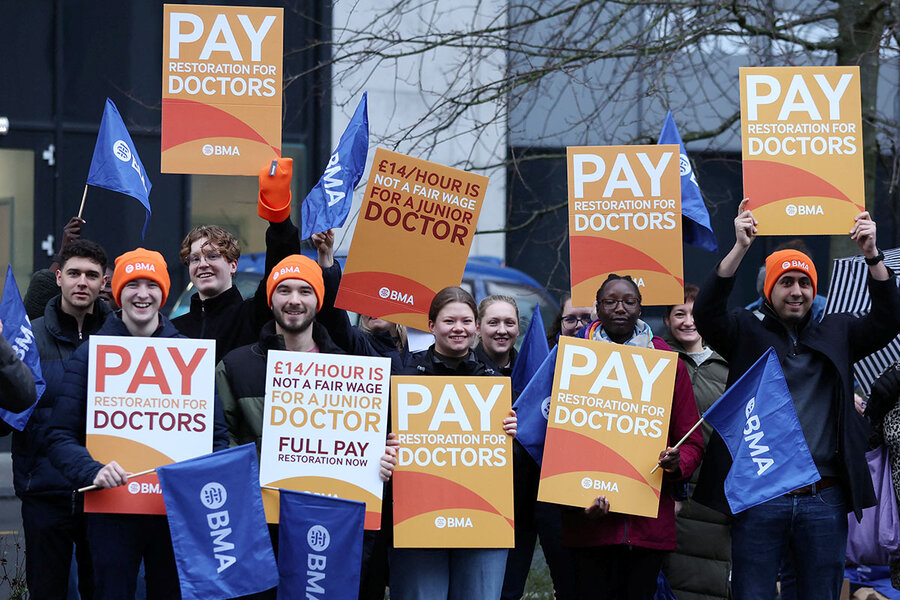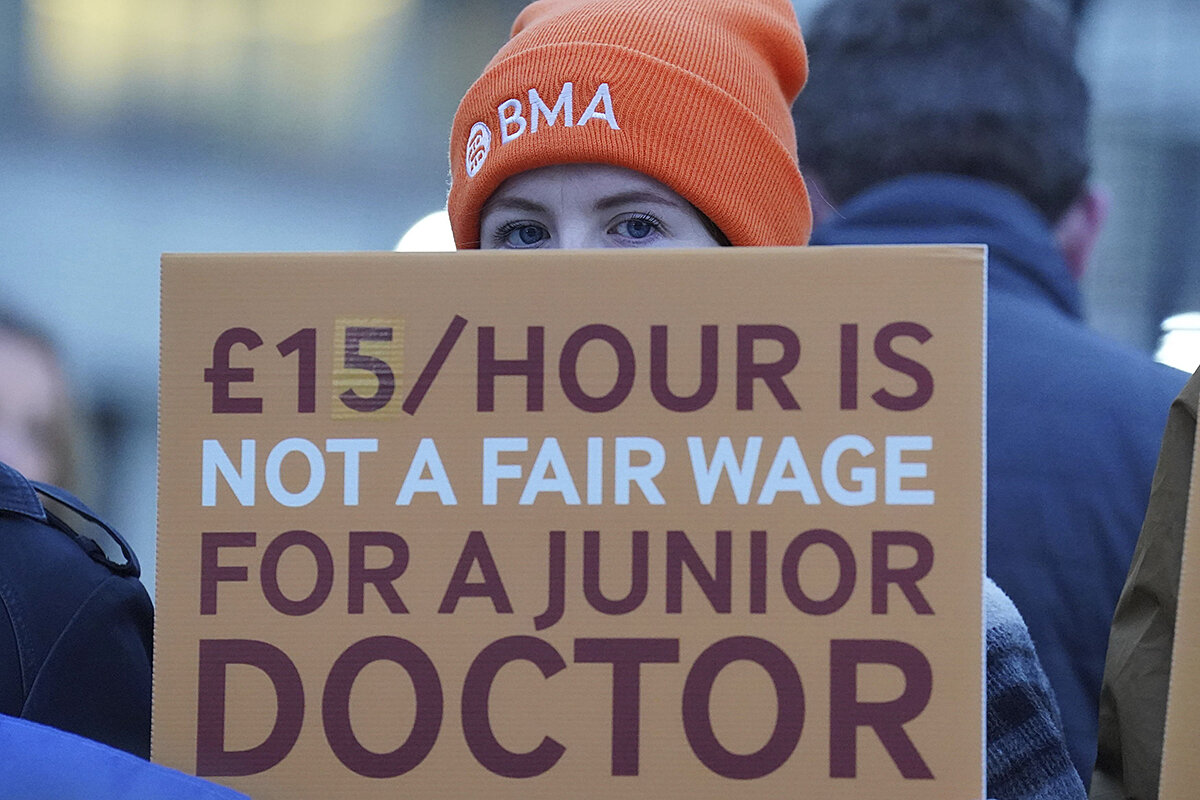Amid doctor strikes, are UK patients losing patience? Three questions.
Loading...
If there is one thing Britons are simultaneously most proud of and most concerned about, it’s their National Health Service. The NHS has been under pressure since before the pandemic, from long waitlists for patients to staffing shortages and financial strain.
The longest strike in NHS history, a six-day walkout led by junior doctors, came to a close Tuesday morning. It capped more than a year of stoppages as health workers across the system – who say they are “understaffed, undervalued, and underpaid” – have demanded better conditions.
Those striking say they are fighting for the long-term safety of patients, while opponents say they are doing more harm than good to the system.
Why We Wrote This
The latest round of strikes affecting the United Kingdom’s National Health Service is testing the limits of the public’s support for NHS staff, but young doctors feel they have few other options.
What’s behind the most recent junior doctor strike?
Other NHS workers have sought salary increases to compensate for post-pandemic inflation. But junior doctors – the U.K. equivalent of residents, interns, and fellows – are pushing for a raise of 35% to “reverse the steep decline” in real terms of their salaries over the last 15 years.
How much real wages have fallen over that time period depends on how you count them. The British Medical Association, the union representing the strikers, calculates a drop of 26% since 2008, using a measure of inflation that includes housing costs. The government uses the consumer price index, which suggests 16% erosion.
In December, the union rejected the government’s offer of a 3% raise, on top of an average increase of 9% over the past year. Union representatives have clarified they are not expecting the full 35% at once but are waiting for a “credible” new offer.
“Morale across the health service is at an all-time low,” said the medical association in a statement. “The government has the chance to show those doctors they still have a future working in this country.”
As tuition expenses have increased, many young doctors are feeling the stress of student debt, on top of their lack of control over where they work and the length of their working days. There are fears of an exodus of young doctors from the NHS to countries with more attractive conditions, such as Australia, Canada, Ireland, and the United Arab Emirates.
What impact has a year of strikes had?
Other NHS employees, including nurses, ambulance staff, consultants, and senior doctors, have won salary increases by going on strike, which they say has been a last resort to effect change.
Last year, support for the strikes was fairly high. But public opinion has soured somewhat on the most recent walkout, the 10th since the start of 2023. Some say the junior doctors are asking for too much in a standoff that is putting patients at risk during one of the busiest times of the year for hospitals.
“We’ve all got to take this hit in this general economic situation,” one retired Briton told The Guardian.
Parts of the NHS are “skating on very thin ice” with the walkouts, said Matthew Taylor, CEO of the NHS Confederation, in a statement. Over the course of 2023, strikes led to the cancellation of 1.2 million health appointments. Prime Minister Rishi Sunak has blamed the striking workers for a record-long waitlist for nearly 8 million health procedures.
Where is the NHS headed from here?
It is clear to most Britons that the system needs reform. Over half the respondents of a survey conducted by The Health Foundation last May said they believed public health will get worse over the next year. Satisfaction with the NHS reached its lowest recorded level in 2022. Nevertheless, the vast majority of Britons continue to support the founding principles behind the NHS: free, high-quality care that is available to all.
Some say the most recent strike reflects a desire to see the NHS live up to those ideals.
“This is not just about the pay itself,” says Anna Gervi Pedersen, a former NHS junior doctor now working as a contractor. She says austerity measures and private finance initiatives have weakened the NHS system over the past 15 years.
“If these policies continue then it is likely the government will seek to see a mixed model of private and public health care, although this is not shown to have better outcomes for health care equity,” she adds.
With Britain’s public finances under stress, others argue that the NHS should make more efficient use of its existing funding rather than receiving more. Some are pushing for increased spending on preventive and social care to avoid higher treatment costs down the line. The number of people over the age of 85 is expected to nearly double by 2050.







